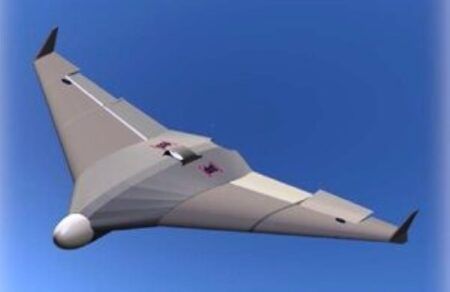Arnold Engineering Development Complex (AEDC) engineers have reached an important stepping stone in the future of hypersonic weapons system program development with the construction and successful checkout of the Hypersonic Aeropropulsion Clean Air Testbed (HAPCAT) Regenerative Storage Heater (RSH).
Ed Tucker, executing agent and AEDC branch chief for the High Speed Systems Test (HSST) program, stated the RSH is a key element in achieving the goal of the HAPCAT project. “Our goal is to develop and demonstrate the first clean air, true enthalpy hypersonic test facility capable of varying simulated flight conditions from Mach 4.5 to 7.5 for aeropropulsion, aerothermal and aero-optics testing,” he said.
Testing of the HAPCAT is being conducted at the Alliant Techsystems (ATK) General Applied Science Laboratories facility in Ronkonkoma, New York, USA. Eventually the technologies developed and validated in HAPCAT will be incorporated into the Aerodynamic and Propulsion Test Unit at AEDC.
Tucker explained that current national hypersonic aeropropulsion ground test facilities use in-stream combustion or vitiation to achieve high temperatures for inlet air, which is delivered to the engine through fixed geometry single Mach number nozzles.
“Vitiated air is not representative of the air that a scramjet engine will experience while in flight and adversely affects the ability to accurately quantify the key performance and operability metrics of air-breathing scramjet propulsion systems,” Tucker said. “This results in increased flight test risk for acquisition programs, and forces developers to build in additional design margin that can reduce system performance.”
The clean-air RSH test ran for approximately 38 hours and surpassed the test objectives of achieving a maximum bed temperature of 4500 degrees Rankin (degR) and demonstrating the operational capability of the RSH to conduct aeropropulsion and aerothermal tests in the future. The bed was twice heated to temperatures exceeding 4,500°C.
After each heating cycle the system was put into “hot standby” mode to simulate the transition time between heating and blowdown during future operations. Following the hot standby periods, two simulated blowdowns were conducted where cold air was blown upward through the cored brick bed and out the coolers.
The HAPCAT technologies are being developed through the Test Resource Management Center’s Test and Evaluation/Science and Technology HSST technology program, executed by AEDC. The HAPCAT RSH utilizes advanced yittria-stabilized zirconia (YsZ) cored brick. Desired flight conditions will be produced by using an air delivery system (ADS) to mix high enthalpy air from the RSH with lower enthalpy air from an alumina pebble bed heater, and with ambient air flows. The final phase of the project will include the development and demonstration of a variable Mach number nozzle that will permit continuous transition throughout a Mach range or 4.5 to 7.5.
“The success of the RSH test would not have been possible without the expertise and dedication of the entire HAPCAT development team, with members from AEDC, Aero Systems Engineering, and Orbital-ATK. working together to overcome many technical challenges,” said Tucker. “These advanced technologies will enable a vastly improved hypersonic scramjet engine and aero-thermal test capability that will exceed any other in the world.”
Upon its completion, the HAPCAT ground test technology development facility will be large enough to test the propulsion system of an X-51 size missile in a direct connect and semi-free jet configuration. It will provide the information and risk reduction required to transition those technologies into a larger full-scale facility such as AEDC’s APTU.
Colonel Tim West, Senior Materiel Leader in AEDC’s Test Operations Division, added, “Ideally, we will add a HAPCAT-type clean air system to APTU in the next three to seven years. This capability is absolutely essential to the successful development and fielding of an optimized hypersonic weapon. Without it, developers will have to incorporate additional design margin to offset the uncertainties associated with testing in a vitiated environment, which will mean a bigger, heavier weapon that fits into fewer aircraft weapons bays and delivers less range and/or payload. HAPCAT proves we can provide the test environment needed to optimize the size and weight of tomorrow’s hypersonic weapons.”
August 20, 2015




